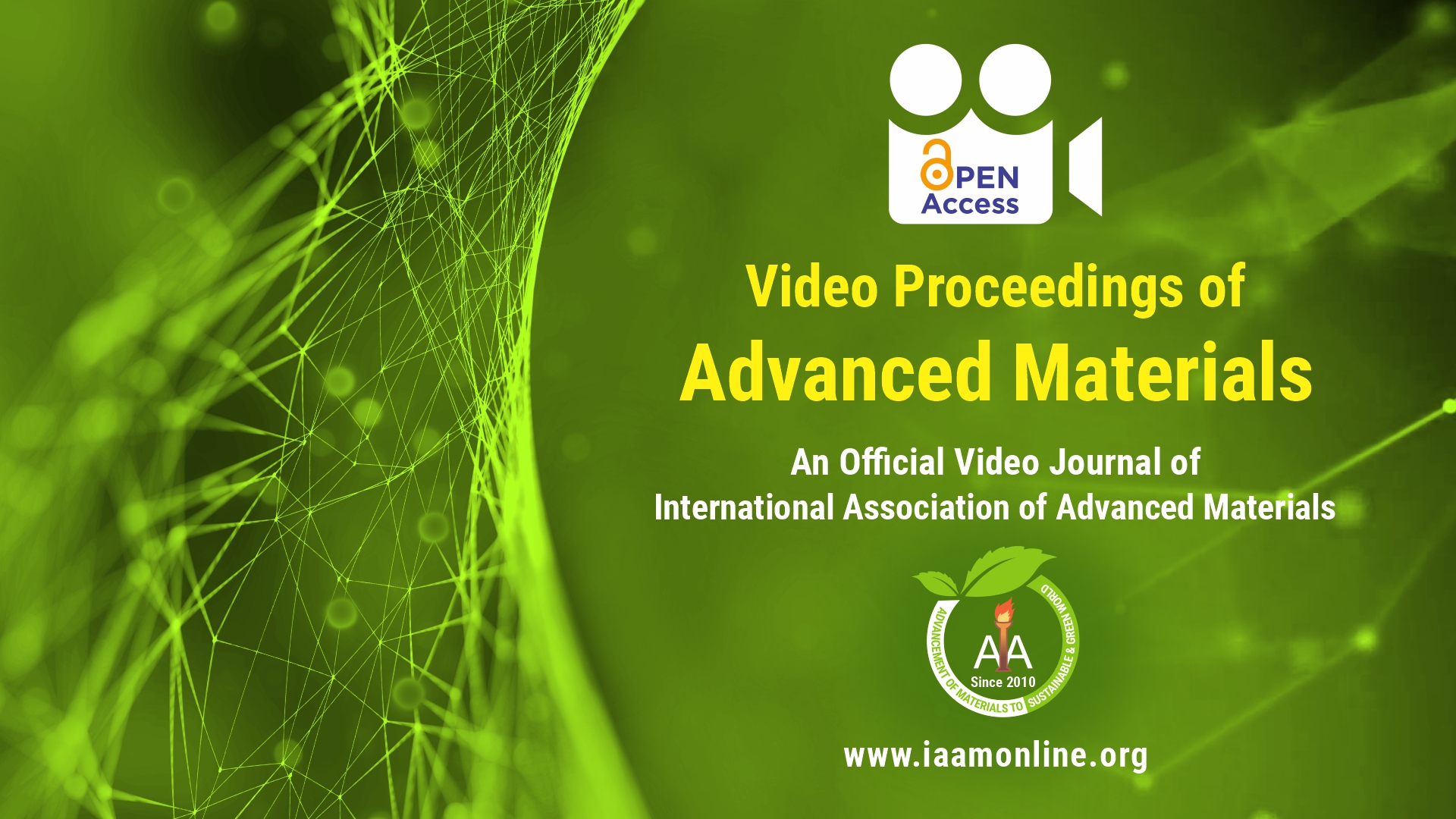Video Article Open Access
Biocompatible and Bio-Inspired Micro- and Nano-Structures for Nanotheranostics
Rosaria Rinaldi1,2
1Department of Mathematics and Physics “E. De Giorgi”, Scuola Superiore ISUFI,University of Salento, Via Arnesano, 73100 Lecce-Italy
2IMM, CNR-Institute of Microelectronics and Microsystems, Via Monteroni, 73100 Lecce-Italy
Vid. Proc. Adv. Mater., Volume 2, Article ID 2021-02137 (2021)
DOI: 10.5185/vpoam.2021.02137
Publication Date (Web): 28 Mar 2021
Copyright © IAAM
Abstract
References
- Sallustio, F.; Curci, C.; Aloisi, A.; Toma, C. C.; Marulli, E.; Serino, G.; Cox, S. N.; De Palma, G.; Stasi, A.; Divella, C.; Rinaldi, R.; Schena, F. P.; Inhibin-A and Decorin Secreted by Human Adult Renal Stem/Progenitor Cells Through the TLR2 Engagement Induce Renal Tubular Cell Regeneration, Scientific Reports, 2017, 7.
- Mandriota, G., R. Di Corato, et al. "Design and Application of Cisplatin-Loaded Magnetic Nanoparticle Clusters for Smart Chemotherapy." ACS Applied Materials & Interfaces, 2019, 11(2), 1864-1875.
- Toma, C. C.; Aloisi, A.; Bordoni, V.; Di Corato, R.; Rauner, M.; Cuniberti, G.; Delogu, L. G.; Rinaldi, R.; Immune Profiling of Polysaccharide Submicron Vesicles, Biomacromolecules, 2018, 19 (8), 3560-3571.
- Della Rosa, G., D. Vona, et al. "Luminescent Silica-Based Nanostructures from in Vivo Iridium-Doped Diatoms Microalgae." ACS Sustainable Chemistry & Engineering, 2019, 7(2), 2207-2215.
Biography
Rosaria Rinaldi (H-index: 35 WOS, 40 Google Scholar) is Full Professor of Condensed Matter Physics at the Faculty of Sciences of the University of Salento, Italy, where she teaches Solid State Physics and Technology of Semiconductors and their Heterostructures, Physical Methodologies for Pharmaceutical and Industrial Biotechnology, and Nanobiotechnology and Nanobioelectronics. She is Coordinator of the Laboratory of “Interdisciplinary Applications of Exact Sciences” and Vice-Director of the Excellence University School ISUFI (Istituto Superiore Universitario di Formazione Interdisciplinare) of the University of Salento.
She is coordinator of the PhD school in Physics and Nanoscience, University of Salento. She is the director of the Regional Facility on “Nano-Biotechnologies for Diagnostics and Therapy NABIDIT”. She is member of the Italian Ministry of University & Research (MIUR) Evaluation Board for the Strategic Research Plans of Public Research Centers. She has been Eleonore Trefftz Professor at Technical University Dresden Germany from May 2015 to Apr. 2016. She has been responsible of R&D joint labs with ST- Microelectronics ad Italian Institute of Technology (IIT, where she is research associate). On December 2005, she was Awarded by "Le Scienze" medal and the President (Carlo Azeglio Ciampi) of Italian Republic medal for the results achieved in the field of nano-biotechnology. On December 2007 Prof. Rinaldi was recognized as one of the most successful women in Southern Italy for leadership in Applied Science and industrial Innovation in the newspaper “il Sole 24 Ore”: “Quando carriera fa rima con impresa” (When career rhymes with business). On November 2016 she won the ITWIIN (The Italian Association of Woman Inventors and Innovators)– prize for “High Education”.
She authored chapters for eleven research monographs (published in Springer, Elsevier, Wiley, World Scientific) “Growth and characterization of selfassembled semiconductor macroatoms”, “Molecular Electronics”, “Nano-Bio Electronics”, “Protein based nano-devices”, “Amyloid fibrils: from nature to nanotechnology”, “Nanotechnology for diagnostics and sensing: soft and advanced imaging/sensing approaches”, “Biological Applications of LbL Multilayer Capsules: From Drug Delivery to Sensing.",“Carnosine and Alzheimer’s Disease-Related Fibril Formation”, “Toxicity assessment in the Nanoparticle Era”, “Nanotechnologies for Neurosciences”; "Nanoscale Molecular Automata: from Materials to Architectures". She edited an influential book "Nanobiolectronics for electronics, biology and medicine"(Springer, 2009). Authored over 280 papers in peer reviewed international journals Awarded over 10 million EURO in grants from the Italian MIUR, EU, Regional Government in, last 10 years.
The research group of Prof. Rosaria Rinaldi operates in “Nanomedicine, Nanobioelectronics and Nanobiotechnology Laboratory”, which is a joint lab of IMM and of the Dept. of Mathematics and Physics of UNISALENTO, in Lecce. The group has more than 25 year of experience on the following research areas:
i) Nanolithographies, soft lithographies, and Surface functionalization; ii) new prototype of molecular and biomolecular electronic devices. Nanobiosensors, Lab-on-chip for analysis and diagnostics at the point of care; iii) Scanning probe microscopy and spectroscopy of single molecules, cells, and molecular layers and crystals, under different environment and at low temperature; iv) intelligent drug delivery and targeted therapy; v) design and bioengineering of polymeric scaffolds for tissue engineering and regenerative medicine; vi) Fluorescence, phosphorescence, Raman and micro-nano-fluorescence studies of biological species; and vii) technology of prototype hybrid devices. Molecular Quantum Cellular Automata; viii) investigation of the linear and non-linear optical properties of fluorescent molecules, polymers and nanocrystals.
Video Proceedings of Advanced Materials

Upcoming Congress



